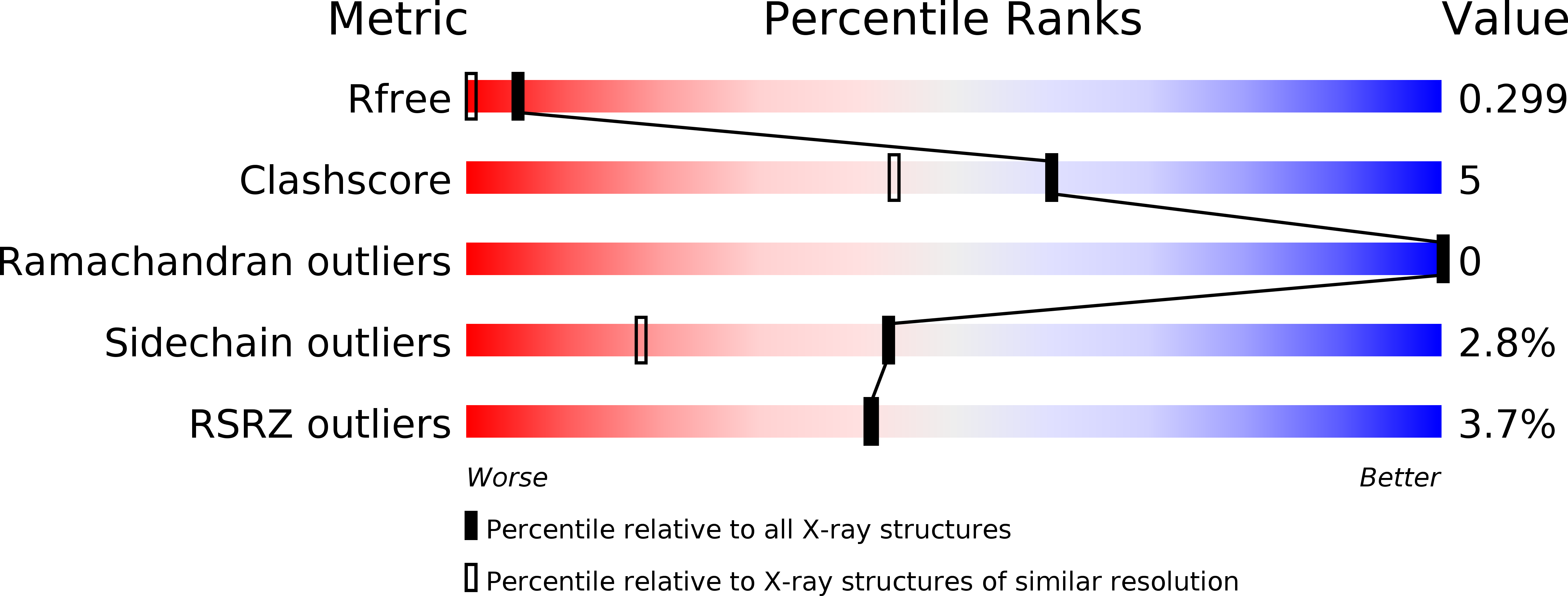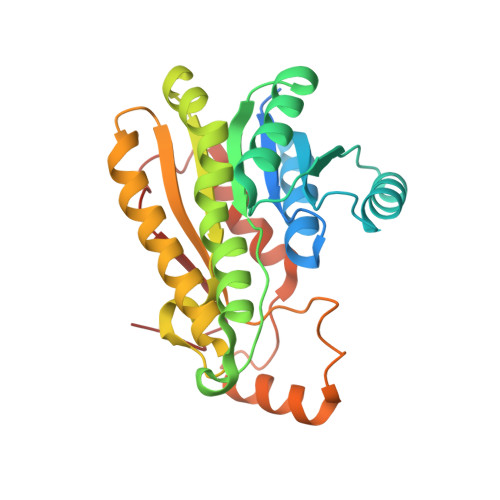Crystal structure of (R)-3-hydroxybutyryl-CoA dehydrogenase PhaB from Ralstonia eutropha
Kim, J.-E., Chang, J.H., Kim, E.-J., Kim, K.-J.(2014) Biochem Biophys Res Commun 443: 783-788
- PubMed: 24211201
- DOI: https://doi.org/10.1016/j.bbrc.2013.10.150
- Primary Citation of Related Structures:
4N5L, 4N5M, 4N5N - PubMed Abstract:
(R)-3-hydroxybutyryl-CoA dehydrogenase PhaB from Ralstonia eutropha H16 (RePhaB) is an enzyme that catalyzes the NADPH-dependent reduction of acetoacetyl-CoA, an intermediate of polyhydroxyalkanoates (PHA) synthetic pathways. Polymeric PHA is used to make bioplastics, implant biomaterials, and biofuels. Here, we report the crystal structures of RePhaB apoenzyme and in complex with either NADP(+) or acetoacetyl-CoA, which provide the catalytic mechanism of the protein. RePhaB contains a Rossmann fold and a Clamp domain for binding of NADP(+) and acetoacetyl-CoA, respectively. The NADP(+)-bound form of RePhaB structure reveals that the protein has a unique cofactor binding mode. Interestingly, in the RePhaB structure in complex with acetoacetyl-CoA, the conformation of the Clamp domain, especially the Clamp-lid, undergoes a large structural change about 4.6 Å leading to formation of the substrate pocket. These structural observations, along with the biochemical experiments, suggest that movement of the Clamp-lid enables the substrate binding and ensures the acetoacetyl moiety is located near to the nicotinamide ring of NADP(+).
Organizational Affiliation:
Structural and Molecular Biology Laboratory, School of Life Sciences and Biotechnology, Kyungpook National University, Daehak-ro 80, Buk-ku, Daegu 702-701, Republic of Korea.














